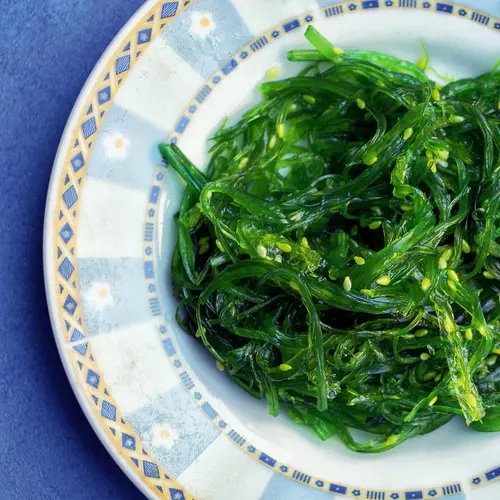Turbot is a type of fish. It's a well-known nutritious seafood delicacy in several parts of the world. Its earliest breeders were in the United Kingdom and parts of Europe. Over the years, more countries have taken up turbot breeding and consumption, including China.
One of the main contributing factors to turbot’s growing popularity is its high nutritional value. A turbot meal will provide your body with protein alongside greatly satisfying your palate if you enjoy fine dining.
What Is a Turbot?
Turbot is a flat-shaped fish. Its eyes are on one side of its head, and the fish is found in several big seas, including the Mediterranean Sea, Baltic Sea, and North Sea. Its scientific name is Scophthalmus maximus.
The bottom-living sea creature feeds on other bottom-dwelling fishes. An adult turbot may grow up to over 6 feet in length.
Life Cycle of a Turbot
Turbot spawns in large numbers during the period between April and August. The spawning season varies from one sea to another, as environmental factors influence it. They are pelagic spawners that produce pelagic eggs, which are nonsticky and buoyant (floating). Turbots can live for as long as 25 years.
Turbot Breeding
Turbot farming has been steadily rising due to its growing global demand. Reliable sources can trace turbot breeding back to the 1990s. Since then, the practice has rapidly advanced to boost the harvest quality.
A lot goes into the whole process of turbot breeding, which makes it a costly affair. High breeding costs, in turn, lead to increased market turbot prices. Nonetheless, turbot are available for fishing throughout the year, and the nutrients it provides will get you your money’s worth.
Nutritional Components of Turbot
Turbot provides a variety of macronutrients and micronutrients. The key nutrients in the fish include the three major components of a balanced diet: proteins, carbohydrates, and vitamins. Some turbot minerals include iron, potassium, magnesium, calcium, and zinc.
Health Benefits of Turbot
Turbot is packed with all the necessary nutrients for your body to flourish. Each of these nutrients has its unique value to your body. A healthy meal consists of both macronutrients and micronutrients.
Turbot carbohydrates are present at an estimated value of 1.2 grams per 100 grams of turbot. Carbohydrates provide your body with energy and replenishes your energy reserves. It fully energizes you throughout the day. An increase in your blood glucose levels should also be recorded.
Turbot protein contains several essential amino acids. Essential amino acids are suitable for your body, and you can only get them from your diet. Essential amino acids also significantly increase the protein quality in a given protein source, in this case turbot.
Proteins are essential for general body growth and development. An adequate supply of this body-building nutrient promotes the wound healing process in case of an injury. A 100-gram serving of turbot will provide you with about 16 grams of protein.
Turbot vitamins include vitamins A, B1, B3, B6, B12, and C. Vitamins enhance your body’s ability to fight off infections by eliminating disease-causing microorganisms. Vitamin A will boost your vision and will primarily benefit a developing child. Vitamin C will improve your skin’s appearance.
Turbot fat is present at an estimated 1.3 grams per 100 grams of turbot. It provides your body with healthy unsaturated fat. A low-calorie diet promotes a healthy heart. Consumption of unhealthy fats increases cholesterol levels. Over time, the accumulation of cholesterol in your blood levels may lead you to develop obesity, diabetes, and heart problems.
Turbot mineral nutrients like calcium and phosphorus promote bone and teeth health. They generally enhance proper bone and teeth development. The minerals strengthen your bone and teeth by replacing lost bone and tooth mass caused by risk factors like age.
How to Preserve and Prepare Turbot
Turbot meat is highly perishable. Following proper handling and storage measures help to avoid spoilage and the subsequent occurrence of food poisoning. Check the condition of your package before purchase to make sure there are no holes and that the seal is intact.
Put your turbot meat in the coolest part of your fridge upon arrival, at a temperature between 32°F to 38°F. Place your turbot meat on the lowest shelf in an airtight storage bag or container away from cooked foods. Move your turbot to the freezer if uncooked two days after purchase.
Proper storage aids in retaining its flavor and taste. Turbot is chunky with a mild flavor, and there are a variety of ways to cook it. You can have it marinated with your favorite spices and later grill, poach, pan-fry, or bake it.
Turbot’s chunky slices can be cut into sizable strips or put in skewers and served as a stew or with greens, salad, rice, favorite sauces, and other accompaniments.
Facts About Turbot
Some essential turbot facts include:
- Turbot provides high-quality protein.
- Turbot is often confused with other fish species, particularly halibut and flounder.
- It has a low fat content.
- It may cause allergic reactions in some.
- Turbot is relatively costly compared to other fish meat.
- It's potentially harmful to consume turbot raw due to the presence of toxic substances like mercury.
- In Europe, turbot can only be consumed raw under specific guidelines approved by the European legislation.
Turbot is the perfect addition to your low-fat diet plan if you're actively trying to lose weight. Visit a doctor for advice on including turbot in your weight loss diet.

